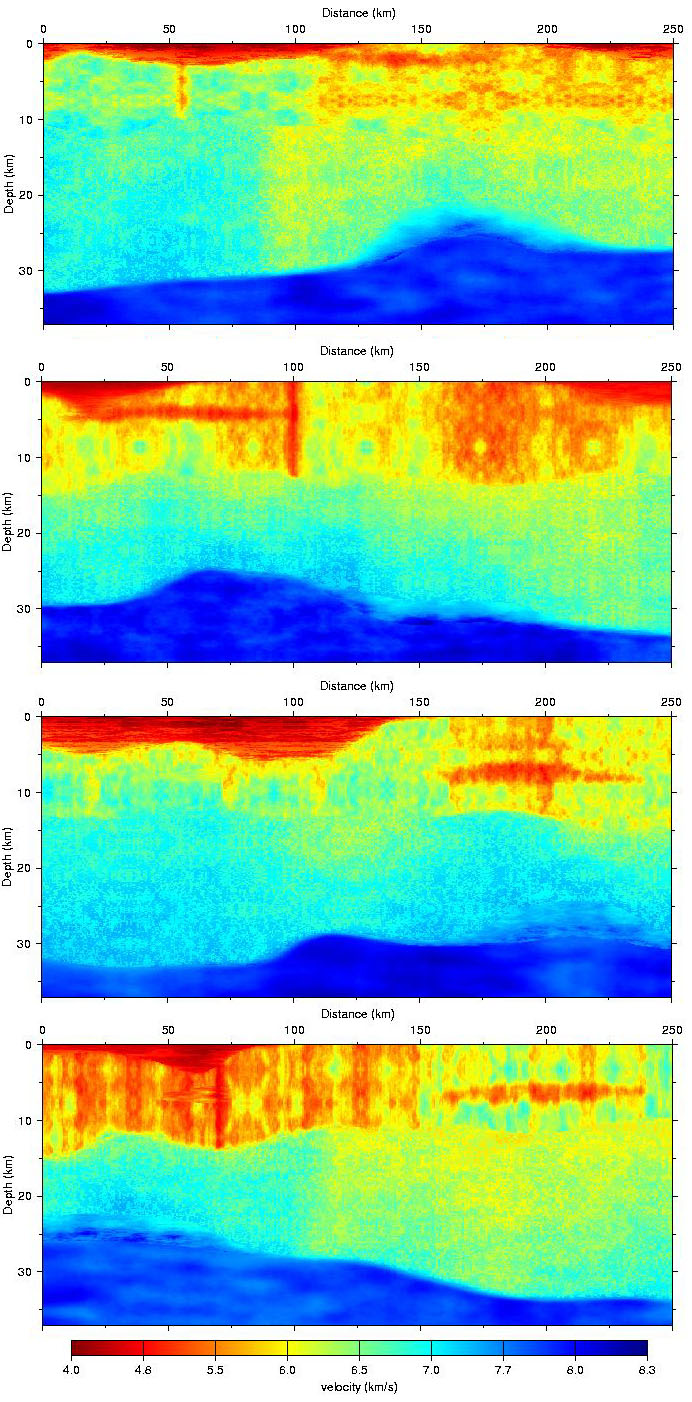
A synthetic wide-angle dataset has been calculated for a realistic crustal model, which will remain unknown to the workshop participants. Both vertical and horizontal component data for 51 shots have been calcuated using a 2-D visco-elastic code (Robertsson et al. 1994).
The model is 250 km long, and the shot and receiver spacings are ~5km and 90m, respectively. Traces from all 2779 recievers are available for each shot. The trace lengths are 40 seconds, sample rate is 16ms (2501 samples), and the data have been reduced (linear moveout correction) using 7km/s. The data are in IEEE segy format, one file for each shot record (and each component), for a total of 102 files.
The files may be obtained here. The data are located in the vertical/ and horizontal/ directories. There are 51 gzipped-compressed segy files in each directory, each file being roughly 25 Mb in size, for a total of about 1.25 Gb in each directory.
If you are unable to download the data, please e-mail Colin Zelt at czelt@rice.edu for assistance.
The model is located in the model/ directory. In that directory there is a read.me file to explain all the files in the directory.
The directories vertical2 and horizontal2 contain a high-resolution dataset with a shot and receiver spacing of 90m from a 45 km portion of the full model, between 175-220km.

Four example realizations of models produced by a program using different random number seeds, that also created the model from which the synthetic data for the CCSS workshop have been calculated. Only the P-wave velocity fields are shown; the complete models are specified by Vp, Vs, density, Qp and Qs on a 20m grid.
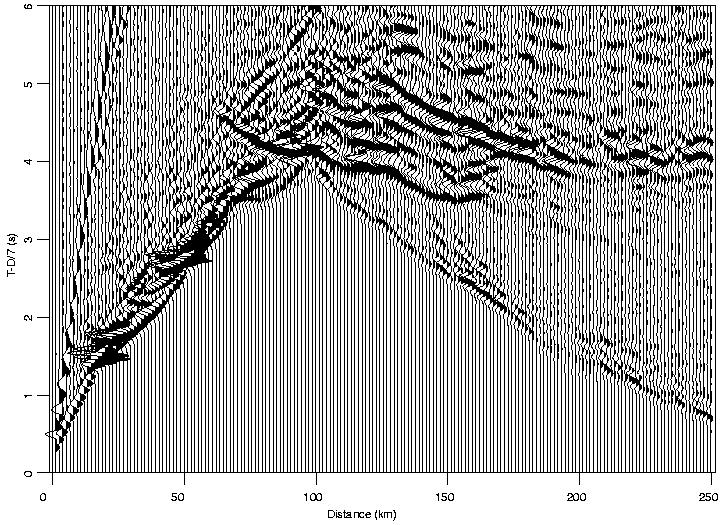
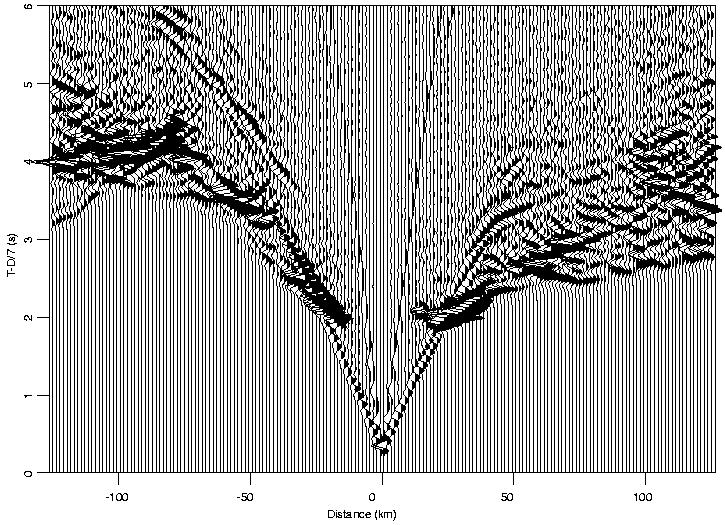
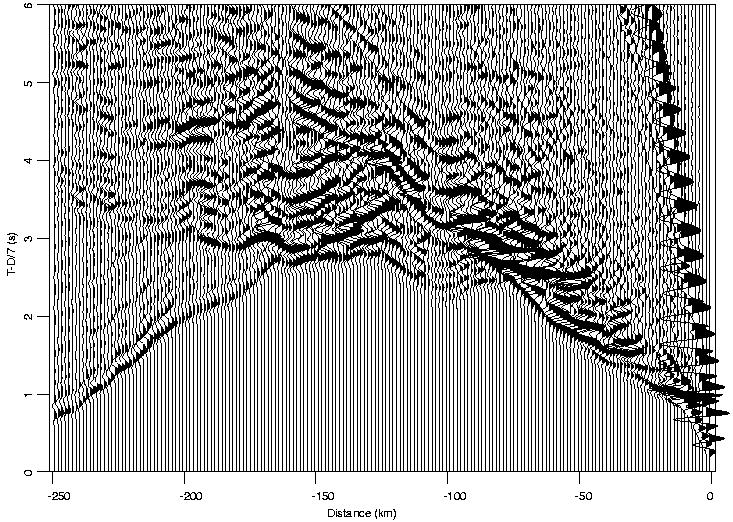
Examples of vertical-component shot records from the wide-angle dataset to be distributed. Shot spacing is ~5km, receiver spacing is 90m. The center frequency of the source is about 5 Hz, with energy between 2-11 Hz. For clarity, every 15th seismogram is shown. Data reduced at 7 km/s; each seismogram was calculated to 60 seconds (unreduced time), but will be made available to the workshop participants at 40 seconds length after applying a reducing velocity (linear moveout correction) using a velocity of 7km/s (and a 16ms sampling interval).
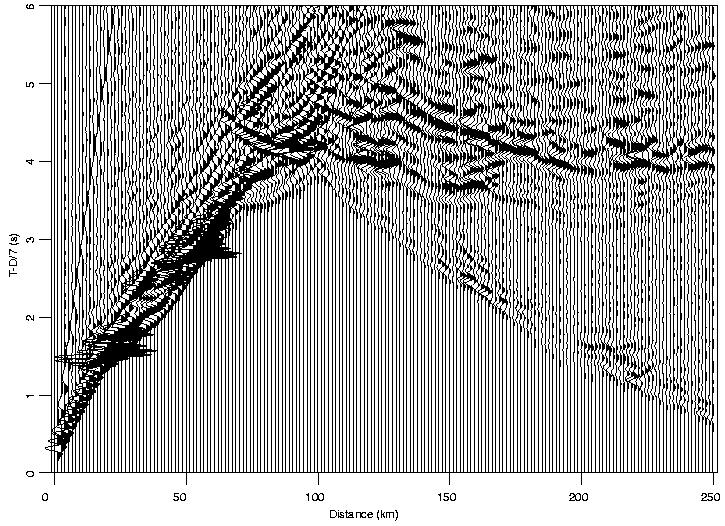
Example of horizontal-component shot record from the wide-angle dataset to be distributed. Both vertical and horizontal component data will be made available.
Reference: